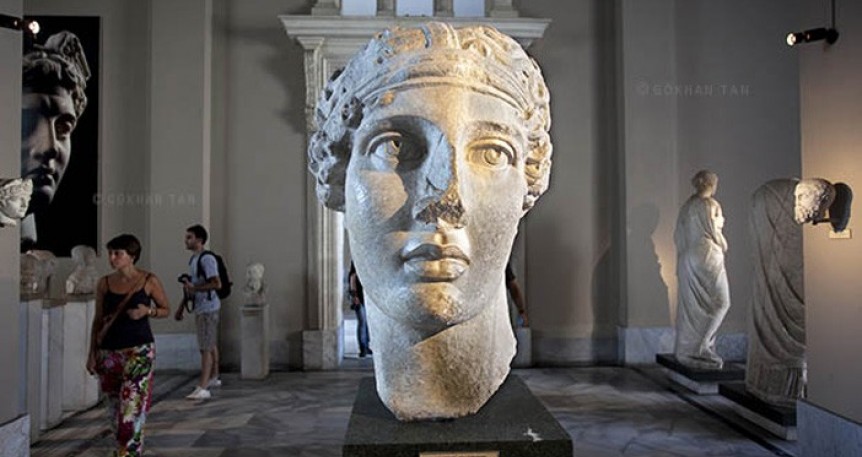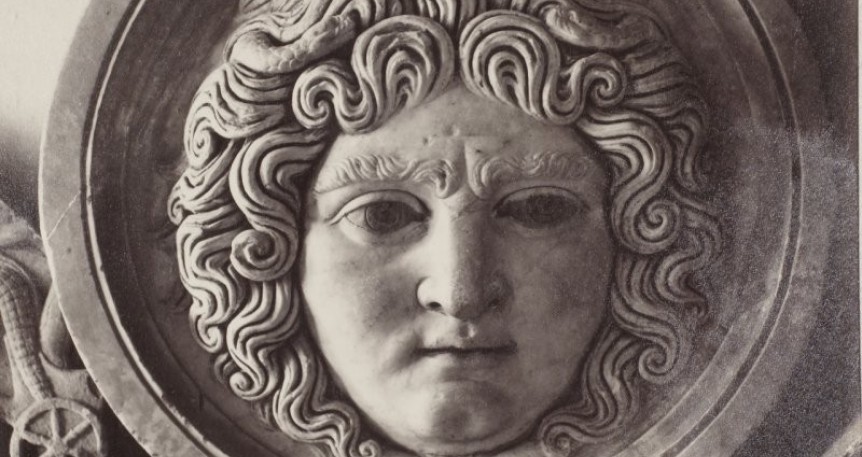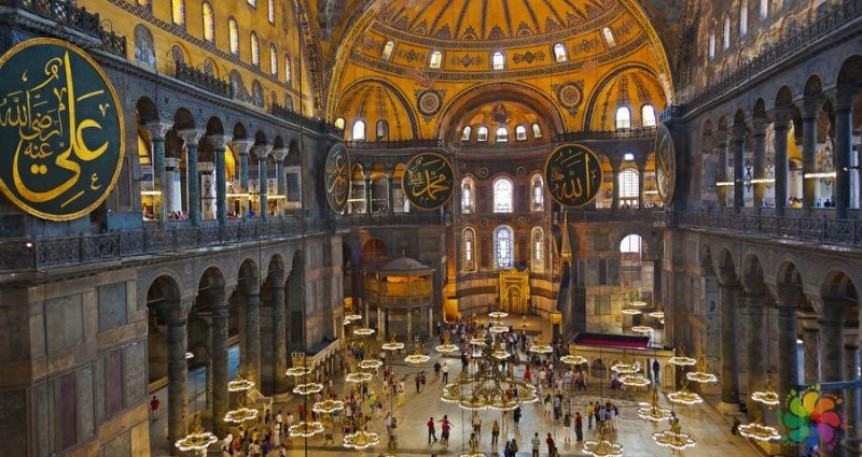Istanbul Archaeological Museum
Historical relics collected during the Ottoman rule were first housed in the Church of Haghia Eirene in 1846, an enterprise which grew to include the Tiled Pavilion as well. From 1872 to 1881, the museum grew under the direction of Anton Dethier, who was appointed as its director by the Minister of Education Vefik Pa?a. The museum came into its own in 1891, when its new director, the painter Osman Hamdi Bey, comissioned a building to the architect Alexander Vallaury. Enlarged with new building in 1991, the recently reorganised museum now comprises the Museum of the Ancient Orient, the Tiled Pavilion and the main building of the Archaeological Museum. The Archaeological Museum was awarded the Council of Europe Museum Prize in 1993.
Hagia Sophia Museum
Hagia Sophia is the one of the most visited museums and most prominent monuments in the world in terms of art and the history of architecture. It has also been called “the eighth wonder of the world” by East Roman Philon as far back as the 6th century. The current Hagia Sophia is the third construction, done in a different architectural style, even though it occupies the same location as the previous two. The original building was constructed by the most important architects of the period (527-565), Anthemios (Tralles) and Isidoros (Miletus), under the order of Emperor Justinianos. It is mentioned in the resources that during its construction period, the two prominent architects each had 100 architects working under them, who in turn had 100 workers each working under them.
It was used as a church for 916 years but, following the conquest of Istanbul by Fatih Sultan Mehmed, the Hagia Sophia was converted into mosque. Afterwards, it was used as a mosque for 482 years. Under the order of Atatürk and the decision of the Council of Ministers, Hagia Sophia was converted into a museum in 1935. Hagia Sophia is open for visit every day. The winter visiting hours for the Hagia Sophia are from 09.00 to 17.00, with the final entry being at 16.00. During the summer, the visiting hours are between 09.00 and 19.00, with the final entry being at 18.00. Passes are available at the box office in the museum.
Basilica Cistern
Basilica Cistern is an underground cistern built by the late Roman or early Byzantine Emperor Justinian the Great in Constantinople during the 6th century. It was constructed under a large public square, the Stoa Basilica, after which it was named. Some call it “The Sunken Palace” (Yerebatan Sarayi in Turkish) due to its underground magnificent marble columns rising out of the water. Constantinople is now abbreviated to Istanbul in Turkish since the Byzantine capital fell in 1453 to Ottoman ruler Mehmet II. But it has nearly always held prime a attraction for superpowers for its mix of East and West at the exotic crossroads of Europe and Asia. In the early Byzantine Period, emperors built cisterns around the interior of the walled city to meet the water needs of residents, particularly during wars where sieges were a dire threat. According to some historical texts, as many as 7,000 slaves were employed in the construction of the Cistern. Water was brought from the hills of Belgrade Forest located 12 miles away. After the Ottoman conquest of Constantinople, the Ottomans used the Cistern water to irrigate the gardens of Topkapi Palace. After they installed their own relatively modern water system, however, the Ottomans stopped using the Cistern’s water.








